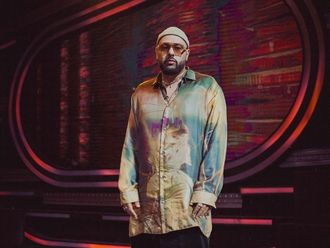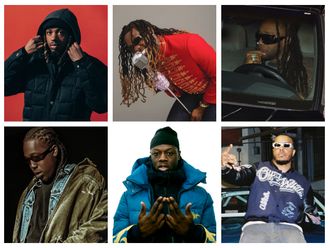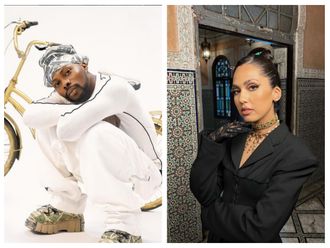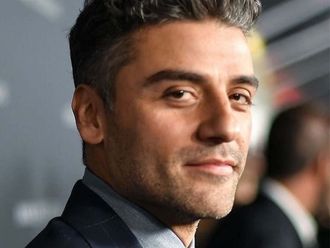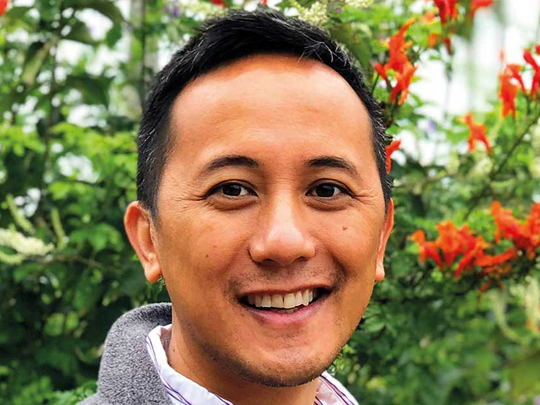
Behind some of the decade’s biggest animations sits a team of dedicated creatives drawing up intricate worlds from scratch. And behind box office hits such as Tangled, Kung Fu Panda 2 and How to Train Your Dragon is seasoned artist Tron Mai, the current Head of Story at DreamWorks.
Mai, who has worked for everyone from Nickelodeon to Disney, will impart his knowledge of the industry at –ING Creative festival, taking place from April 11-13 at Dubai Design District (d3).
But first, he tells Gulf News tabloid! what it takes to work at some of the world’s most prolific production houses.
Hi Tron! Thanks for taking the time to chat. Firstly, can you tell us what being Head of Story at DreamWorks entails?
I [work closely] with the director, helping him to visualise the film and get his vision out of what the film is. I also partner with the creative leadership, such as the producer and the studio, to really keep the film on track. I’m also supervising a group of six to eight story artists [who are] visualising the film. When we talk about visualising the film, it’s someone who takes script pages of variable descriptions and draws the first version of what the film looks like — so the film is told with drawings.
In your experience, what’s the recipe to great storytelling?
There are so many elements. At the end of the day, we connect with characters and we want to try to project ourselves through that character. That’s one of the major ingredients, trying to make that character specifically different, but yet somewhat universal to anyone.
How did you first know you wanted to work in animation?
Oh, wow! I remember watching Peter Pan as a kid, and I just loved it. It made me feel so good. But I always grew up drawing and making things and creating art. I didn’t know what else to do, so I was like, ‘Can I do this for a living?’ Going to high school and learning about making a career as an artist, that was game-changing for me. We visited the Disney Animation studio in Florida, and that showed me all the possibilities of what you can do.
What was the first big project you worked on?
I’ve been doing this now for close to 20 years, but the first project I worked on was for NBC. It was a prime-time animated show by David Spade called Sammy. It was very short-lived [the series ran from August 8-15 in 2000]. I worked on a lot of Men in Black, Rugrats, The Wild Thornberrys and Rocket Power. The first major film I worked on was at Disney [and] was called Rapunzel at the time. [It later became Tangled.]
What is one of the biggest challenges of telling a story in a visual medium?
One of the biggest challenges we’re facing right now is that the films we create have to compete with these giant blockbusters. It’s a constant challenge. Before, there might be three animated films a year. Now there might be 15 animated films. But you’re not only competing against those 15 animated films. One studio may have 30-50 films out a year. You’re competing against all that.
Do you have any preference between 2D and 3D animation?
I love both, only because at the end of the day, behind these films and projects, whether they’re 2D or 3D, is the artists. It’s still created by a bunch of creative people. We’re still using the same skillset, but the tools are different. They each have their limits. It’s kind of like picking between two of your favourite children — it’s so hard.
Animation seems to advance into new realms every year. What’s next?
There’s this big thing right now with VR [virtual reality]. I think that’s still very new for animation, in general. I’m really excited to see what they do. The new thing for us is to create content beyond one film. I think the audience are binge-watching a lot of cartoons, and what I see in the industry is a hunger for content. What happens is they see the character and the world and they want to see more.
That kind of answers the next question, which is, has there been a shift in the kind of stories and characters that studios are looking for?
Yeah… For example, Game of Thrones or Stranger Things, or even Troll Punchers from DreamWorks Animations, [they have] storylines that carry over. There’s room for all different types of stories, whether it’s a short story, whether it’s 11 minutes, or a season. What’s great about serialised content, it becomes an opportunity to develop each character and tell their own story. You can watch one episode on one of our secondary characters the whole time.
If you have to choose one, what’s your favourite animation of all time?
Oh my god, that’s a really hard question. That is so hard. Okay, I’m going to say Disney’s Peter Pan, only because that’s what inspired my love of animation. There’s so many parts of it — this idea of going to another world and just having fun, and being able to fly. But I think if I can pick one that inspires me personally it’s How to Drain Your Dragon, also. Being a part of that, and how much I was able to pour myself into that film, is probably also very important. I’m kind of cheating a little bit.
What advice would you give to storyboard artists who want to work for big studios?
Attend -ING Creative. It’s one of the major reasons why I’m doing it. What -ING represents to me is a place of learning and getting inspired. It’s really about getting out there and meeting like-minded people. That kind of inspiration is something you can take home with you that will last with you the rest of your life. That’s what happened to me when I visited the Disney Animation studio.
What’s your workshop at -ING going to look like?
The workshop is structured in three different ways. The first workshop is about the creation of the idea. The second workshop is about taking that idea and breaking it down into a movie moment. Movies are about memorable moments. The third workshop is about visual storytelling. At the end of the day, film and animation are all visuals.
Don’t miss it!
Tickets to –ING Creative range from $260 to $470 (Dh954.8 to Dh1,726). Tickets to Mai’s workshop are $235 per session. (April 12, 6.10pm-9.10pm, April 13 2.50pm-5.50pm, and April 13 6.10pm-9.10pm).
-ING Creative is putting on three days of virtually non-stop creative workshops this week (April 11-13) at Dubai Design District (d3). Here are some sessions you can check out:
How to Land Your Dream Job (All Welcome)
By Frankie Ratford
April 12 (10.40am-12.40am)
For all ages and levels, this workshop will give you 10 tips on how to get started, help you figure out the best path for you, and fill you in on the do’s and don’ts of CV-writing.
Storytelling: National Geographic Style (Intermediate)
By Karen Kasmauski
April 12 (2.50pm-5.50pm)
Karen Kasmauski has spent two decades as a National Geographic photographic. She will lead attendees in a workshop on how to shoot like a professional with their own phones or cameras in the iconic style of Nat Geo.
Hands-on Accessory Design (Beginner)
By Winde Rienstra
April 12 (2.50pm-5.50pm)
Fashion designer to the stars — Lady Gaga has worn her designs — Winde Riensta will teach attendees to make their own necklace and bracelet using braiding and macrame techniques.
Illustrative Typography: Creating your own style! (Beginner)
By Tysra
April 13 (2.50pm-5.50pm)
Alexis Tysra is a hand-drawn type master from Paris who’s worked as graphic designer for Nike and Timbaland. The contemporary creative will help you hone your own skillset.
Google Prototyping (Intermediate)
By Joel Beukelman
April 13 (6.10pm-9.10pm)
If prototyping gets you hot, Joel Buekelman, an industry leader who’s worked with Android, Netflix and, now, Google, will teach you how to prototype the Google way, without code.
The Demo-Reel, Hustle with a PRO! (Intermediate)
By Tony Bonilla
April 13 (6.10pm-9.10pm)
Walt Disney animator Tony Bonilla has credits on Moana, Zootopia, Ice Age and more. Here, he will teach how to build the strongest possible demo reel and sell your skills in a competitive market.
*Workshops are $235 per session.



